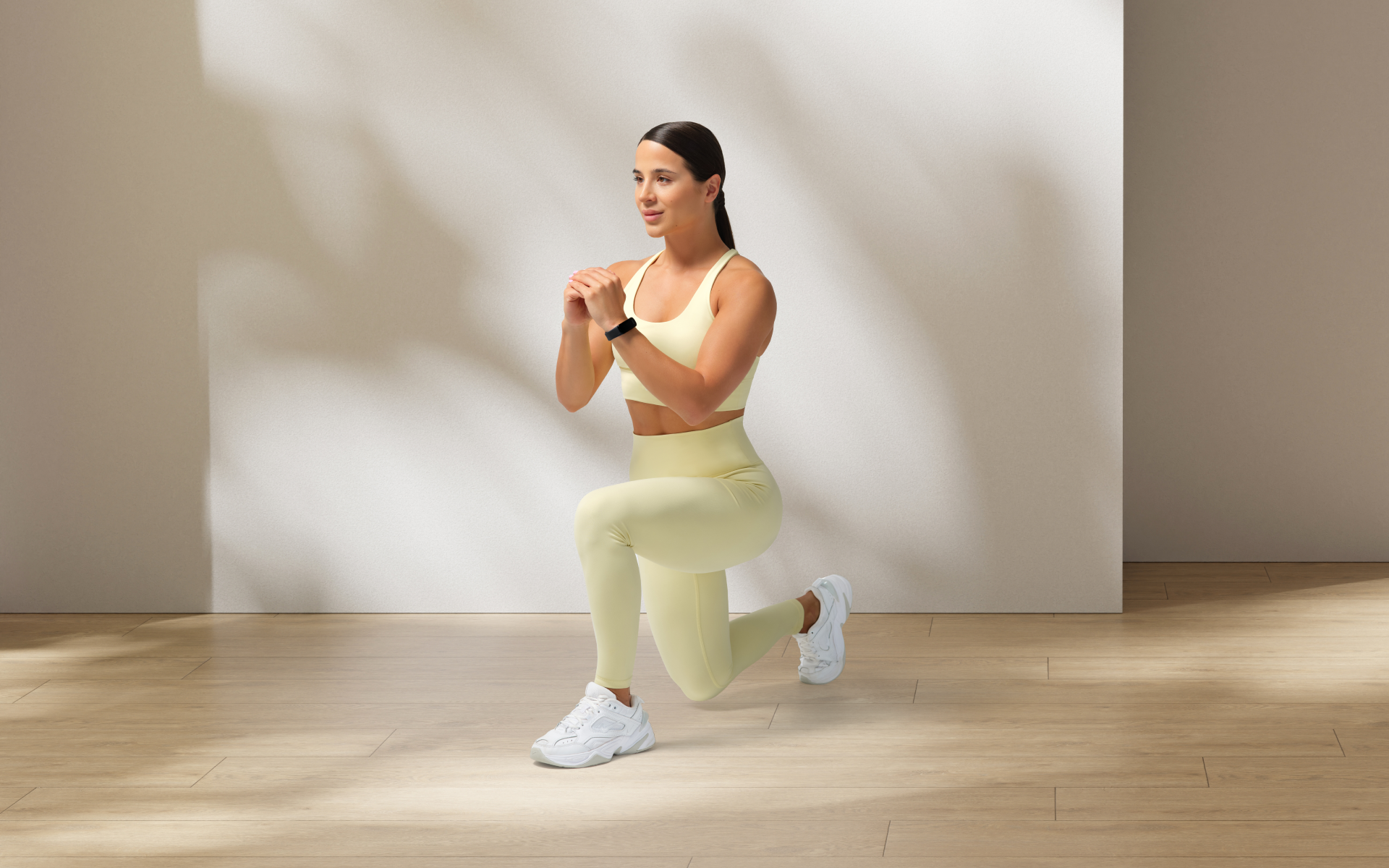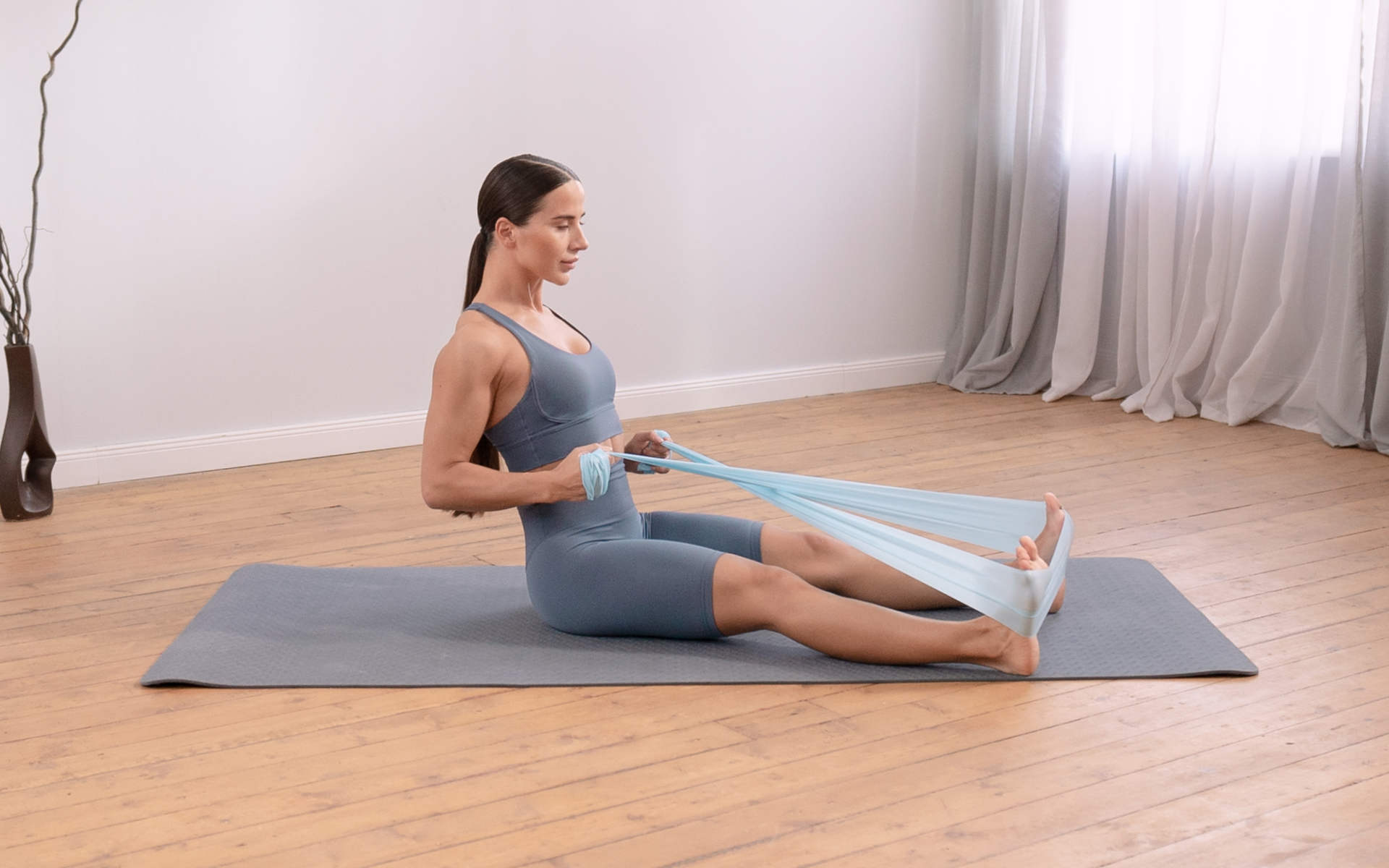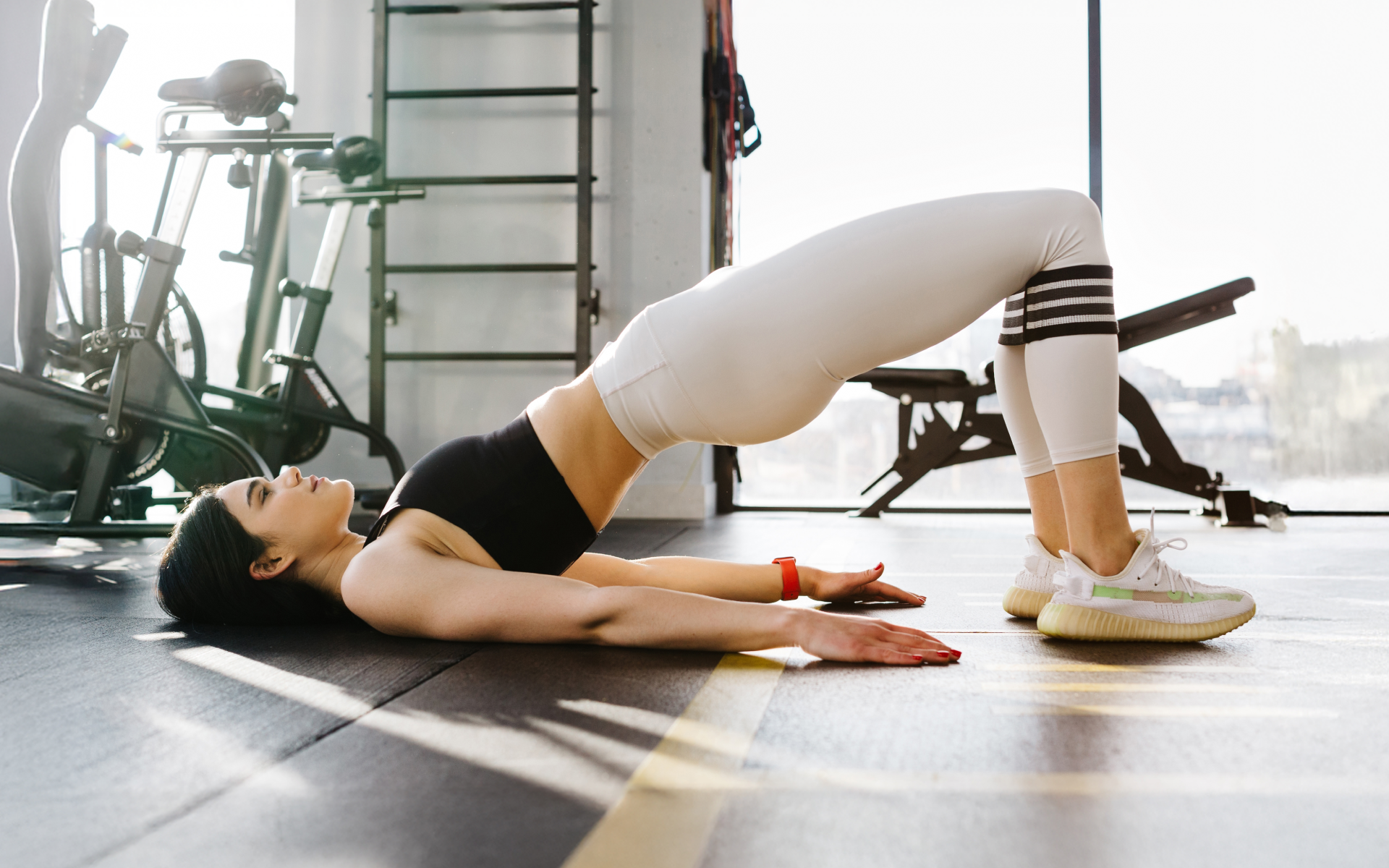Not working out long enough means slower progress, while working out too long can lead to injury and burnout. So, exactly how long should you be working out?
Is there a research-based answer that you can use to structure your calisthenics workout plan?
This is a commonly asked question and one that doesn’t have a definitive answer. However, there are some general guidelines that can help you determine the ideal length of your calisthenics workout.
When it comes to calisthenics, the duration of your workout depends on various factors such as your fitness level, workout goals, and exercise selection. Here’s what you need to know to find a balance between pushing yourself enough for progress and avoiding overexertion.
What Is the Ideal Duration for a Calisthenics Workout?
There is no set duration for a calisthenics workout. This is because every person’s body is unique and each individual has their own fitness goals. The ideal duration for a calisthenics workout depends on various factors:
Fitness Goals
If you are someone who wants to maintain a healthy lifestyle and overall fitness, a 30-45 minute calisthenics workout three times a week might suffice. However, if your goal is muscle building or weight loss, you may need to increase the frequency or duration of your workouts to see visible results.
Experience Level
Beginners should start with shorter workout durations as their body adjusts to the new movements. As they become more experienced and comfortable with their routine, they can gradually increase the duration of their workouts.
Intensity
The intensity of your workout also plays a role in its duration. High-intensity workouts, where you push your body to its limits, should not be done for extended periods, as this can lead to fatigue and burnout. On the other hand, low-intensity workouts can be done for longer durations without risking injury or exhaustion.
Rest Periods
Incorporating rest periods into your calisthenics workout is necessary for muscle recovery and avoiding overworking yourself. Depending on your fitness level and intensity of your workout, rest periods can vary from 30 seconds to a couple of minutes. These rest breaks should also be taken into consideration when determining the duration of your overall workout.
How to Determine the Ideal Length of Your Calisthenics Workout
Finding the right duration for your calisthenics workout may require some trial and error. It is important to listen to your body and make adjustments accordingly. Here are some tips to help you determine the ideal length of your calisthenics workout:
Start Gradually and Increase Over Time
Start with a shorter duration and gradually increase as your body gets stronger. This approach allows your muscles and joints to adapt to the strain, minimizing the risk of injury and ensuring a steady progression in strength and endurance.
Listen to Your Body
Pay attention to how your body feels during and after the workout. Watch for signals such as excessive fatigue, soreness, or pain, as these may indicate that the duration of your workout needs to be shortened. Recovery is crucial for muscle growth and overall fitness, so be sure you’re not pushing yourself too hard too soon.
Track Your Progress
Track your progress and adjust accordingly. Keep a workout journal or use a fitness app to log your exercises, duration, and how you feel afterward. If you are not seeing the desired results over time, it may be beneficial to increase the duration or intensity of your workouts, or to incorporate new exercises into your routine to challenge different muscle groups.
Consult with a Certified Trainer
Consult with a certified calisthenics trainer who can guide you in creating a personalized workout plan based on your goals and fitness level. A professional can provide valuable insights, ensure your form is correct, and help you stay motivated. They can also help you set realistic goals and milestones, making your fitness journey more structured and effective.
BetterMe will shake off your mental funk, rid you of your energy-zapping habits, and help you sculpt the body of your dreams. Intrigued? Hurry up and change your life for the better!
How Long Should a Calisthenics Workout Take?
Some experts recommend a calisthenics workout to be at least 45 minutes, including warm-up and cool-down exercises (1). However, the ideal length of your workout may vary depending on your fitness level, goals, and intensity of your routine. Let’s look at how different fitness goals will influence your calisthenics workout duration:
How Long Should a Calisthenics Workout Be for Beginners?
Beginners should aim for a 25-30 minute calisthenics workout, including warm-up and cool-down exercises. This ensures that their muscles are properly prepared for the workout and reduces the risk of injury (2).
As they become more experienced and comfortable with the movements, they can slowly increase the duration of their workouts by adding more repetitions or incorporating new exercises.
Over time, this gradual progression helps to build strength, endurance, and overall fitness, making the workouts more effective and enjoyable.
How Long Should a Calisthenics Workout Be for Weight Loss?
When it comes to weight loss, a higher duration and intensity of workouts are necessary. This is necessary so as to burn more calories and lose fat. A 45-60 minute calisthenics workout, including warm-up and cool-down exercises, is recommended for those looking to lose weight.
It is important to note that diet and nutrition also play a crucial role in weight loss, so be sure to maintain a balanced and healthy diet alongside your workout routine. Remember that no amount of exercise can make up for an overindulgent diet.
How Often Should I Do Calisthenics to Build Muscle?
Muscle building requires consistency and progressive overload, meaning gradually increasing the challenge on your muscles over time. There is varying research on workout duration without conclusive outcomes. However, most agree that 2-5 sessions per week for 30 minutes to 1 hour can provide an adequate stimulus for muscle hypertrophy, assuming the program is structured appropriately for the fitness level of the individual..
This allows for proper recovery between workouts, which is essential for muscle growth. It is also important to vary your routine and target different muscle groups on different days to avoid overworking the same muscles and risking injury.
Nutrition also plays a crucial role in muscle building, so be sure to fuel your body with enough protein and nutrients to support muscle growth.
Find more information in our, Does Calisthenics Build Muscle article.
How Long Should a Calisthenics Workout Be at Home?
When it comes to working out at home, the duration of your calisthenics workout will depend on your fitness level, goals, and available equipment. The same principles apply – start with shorter durations and gradually increase over time.
Additionally, incorporating household items like chairs, water bottles, or resistance bands can add variety and challenge to your home workouts. A 30-45 minute calisthenics workout at home is a good starting point for beginners, but this can be adjusted based on individual needs and goals.
Read more: Calisthenics Back Workout: Sculpt a Stronger Back
Is 20 Minutes of Calisthenics Enough?
20 minutes may be an effective workout if done with the right intensity and focus. For those with busy schedules or limited time, a 20-minute calisthenics workout can still provide numerous health benefits, such as improved cardiovascular health and increased muscle mass.
Research has also shown that shorter, high-intensity workouts can be just as effective as longer ones when it comes to burning calories and improving overall fitness (4). These shorter sessions not only save time, but they also keep metabolism elevated for hours after the workout, leading to greater calorie burn and enhanced cardiovascular health.
In our previous blog, Micro Workouts we discussed the effects of shorter, high-intensity workouts in detail.
Can You Overdo Calisthenics?
It is possible to overdo any form of exercise, including calisthenics. When you push your body too hard without proper rest and recovery, you risk injury and burnout. Here are some tell-tale signs that you may be overdoing it:
Excessive Muscle Soreness
Feeling sore after a workout is normal; it’s a sign your muscles are adapting. However, if soreness lasts more than 48 hours or worsens, you may be overworking your muscles. This prolonged discomfort suggests your body needs more recovery time, and pushing through could cause injury. Listen to your body and include rest days, stretching, and good nutrition to aid recovery.
Chronic Fatigue
If you constantly feel excessively tired and fatigued, even on days when you haven’t worked out, this may be an indication that your body needs more rest to recover properly. This persistent exhaustion can stem from various factors such as stress, lack of sleep, or overtraining.
Decreased Performance
Not being able to perform exercises as well as before can be a signal of overtraining. This could manifest in decreased strength, endurance, or coordination during workouts. Overtraining occurs when the body doesn’t get enough time to recover between intense workout sessions.
This lack of recovery can lead to fatigue, increased risk of injury, and a decline in overall performance. If you notice these signs, it might be time to re-evaluate your training regimen and incorporate more rest and recovery days to allow your body to heal and rebuild.
Increased Irritability and Mood Swings
Overtraining doesn’t just affect the body; it can also have a significant impact on your mental and emotional state. If you find that you’re feeling more irritable, anxious, or experiencing mood swings, this could be a sign that your body is overstressed.
The hormonal imbalances caused by constant physical strain can affect your emotional health, making it difficult to cope with everyday stressors.
Insomnia or Poor Sleep Quality
Despite being physically exhausted, overtraining can often lead to sleep disturbances such as insomnia or poor sleep quality. Adequate sleep is crucial for muscle recovery and overall health, and a disrupted sleep cycle can impede your progress and cause further fatigue.
If you notice you’re having trouble falling asleep, staying asleep, or waking up feeling unrested, it may be time to scale back your workout intensity and focus on restorative practices like meditation or light stretching before bed.
Elevated Resting Heart Rate
Monitoring your resting heart rate can be a useful tool in identifying overtraining. A noticeable increase in your resting heart rate—especially if it occurs alongside other symptoms such as chronic fatigue and muscle soreness—could indicate that your body is under excessive stress.
Your heart works harder to meet the increased demands placed on your body, even when at rest. Keeping track of your heart rate regularly can help you identify patterns and adjust your training regimen accordingly.
Frequent Illness or Weakened Immune System
Overtraining can compromise your immune system, making you more susceptible to frequent colds, infections, and other illnesses. Intense physical strain diverts resources from your immune system to your muscles and other tissues, weakening your body’s natural defenses.
If you find that you’re getting sick more often than usual, this might be a sign that your body needs more time to recover and rejuvenate.
Persistent Injuries
Recurring pains or injuries that don’t seem to heal are clear indicators that your body is not getting adequate recovery time. Persistent or chronic injuries, such as tendonitis or stress fractures, are often the result of pushing your body beyond its limits without allowing sufficient time for rest and repair.
Intense sweat sessions, working weight loss tips, lip-smacking recipes come in one package with the BetterMe: Health Coaching app—all at your fingertips, start transforming your life now!
Is It Ok to Workout Calisthenics Everyday?
Experts do not recommend working out calisthenics every day, as it puts excessive strain on your muscles and may lead to overtraining. It’s essential to give your body adequate rest and recovery time between workouts to prevent injury and promote muscle growth.
Instead, aim for 3-4 days of calisthenics per week, with at least one rest day in between each session. This is according to the American Council on Exercise (ACE), who suggests alternating between high-intensity and low-intensity workouts to prevent overtraining (5).
In our previous blog, How Long To Rest Between Sets we discussed the optimal rest intervals to have an efficient and effective workout.
It’s crucial to listen to your body and pay attention to any signs of overtraining. If you’re feeling excessively sore, fatigued, or experiencing any other symptoms discussed above, it may be time to take a break and allow your body to recover.
Repeating the same exercises each and every day can put excessive strain on certain muscle groups without giving others a chance to recover. Varying your workouts and incorporating different types of exercises can help prevent overuse injuries and balance the workload on your body.
Sleep is when our bodies do most of their healing and repairing. Make sure you’re getting enough quality sleep every night to support your physical and mental well-being. Aim for 7-9 hours of sleep per night (6).
Read more: 12 Weeks Calisthenics Program Guide: Exercises, Tips, and Frequently Asked Questions
FAQs
Is Calisthenics Enough to Stay Fit?
Calisthenics can be sufficient to maintain overall fitness, as it enhances strength, flexibility, and cardiovascular health. These bodyweight exercises, like push-ups, squats, and pull-ups, target multiple muscle groups and require minimal equipment. Consistency and proper technique are key to achieving and maintaining fitness through calisthenics.
How Fast Do Calisthenics Build Muscle?
The rate at which calisthenics builds muscle varies depending on factors like diet, workout intensity, and individual metabolism. Generally, beginners may start seeing muscle gains within a few weeks of consistent training. Progress may slow over time, but varying exercises and increasing intensity can help continue muscle growth.
Can You Do Calisthenics 2 Days in a Row?
You can perform calisthenics two days in a row, but it is vital to listen to your body and avoid overtraining. Alternating between different muscle groups or focusing on varying intensities can help prevent fatigue and injury while allowing your body adequate recovery time.
Is Calisthenics Better Than Gym?
Whether calisthenics is better than gym workouts depends on individual goals and preferences. Calisthenics emphasizes functional strength and can be more adaptable with minimal equipment, making it accessible and versatile.
However, gyms offer more controlled environments and specialized equipment, which can target specific muscle groups more effectively. Ultimately, a combination of both might provide a balanced and comprehensive fitness regimen.
The Bottom Line
A typical calisthenics workout should last between 30 to 60 minutes, depending on your fitness level and goals. Beginners may start with shorter sessions to build endurance, while more advanced practitioners can extend their workouts to improve strength and stamina.
It’s crucial to warm up properly and include a mix of exercises targeting different muscle groups, ensuring a comprehensive and effective workout. Remember to listen to your body and adjust the duration as needed to avoid overtraining and ensure proper recovery.
DISCLAIMER:
This article is intended for general informational purposes only and does not serve to address individual circumstances. It is not a substitute for professional advice or help and should not be relied on for making any kind of decision-making. Any action taken as a direct or indirect result of the information in this article is entirely at your own risk and is your sole responsibility.
BetterMe, its content staff, and its medical advisors accept no responsibility for inaccuracies, errors, misstatements, inconsistencies, or omissions and specifically disclaim any liability, loss or risk, personal, professional or otherwise, which may be incurred as a consequence, directly or indirectly, of the use and/or application of any content.
You should always seek the advice of your physician or other qualified health provider with any questions you may have regarding a medical condition or your specific situation. Never disregard professional medical advice or delay seeking it because of BetterMe content. If you suspect or think you may have a medical emergency, call your doctor.
SOURCES:
- Standardized Physical Training Guide (2003,umich.edu)
- Warm Up, Cool Down (2024,heart.org)
- Protocol for Minute Calisthenics: a randomized controlled study of a daily, habit-based, bodyweight resistance training program (2020,nih.gov)
- Short Bursts of Activity Can Have Huge Health Benefits (2023,uhhospitals.org)
- High-intensity Interval Training for Clinical Populations (n,d,acefitness.org)
- How Much Sleep Do You Need? (2024,sleepfoundation.org)











